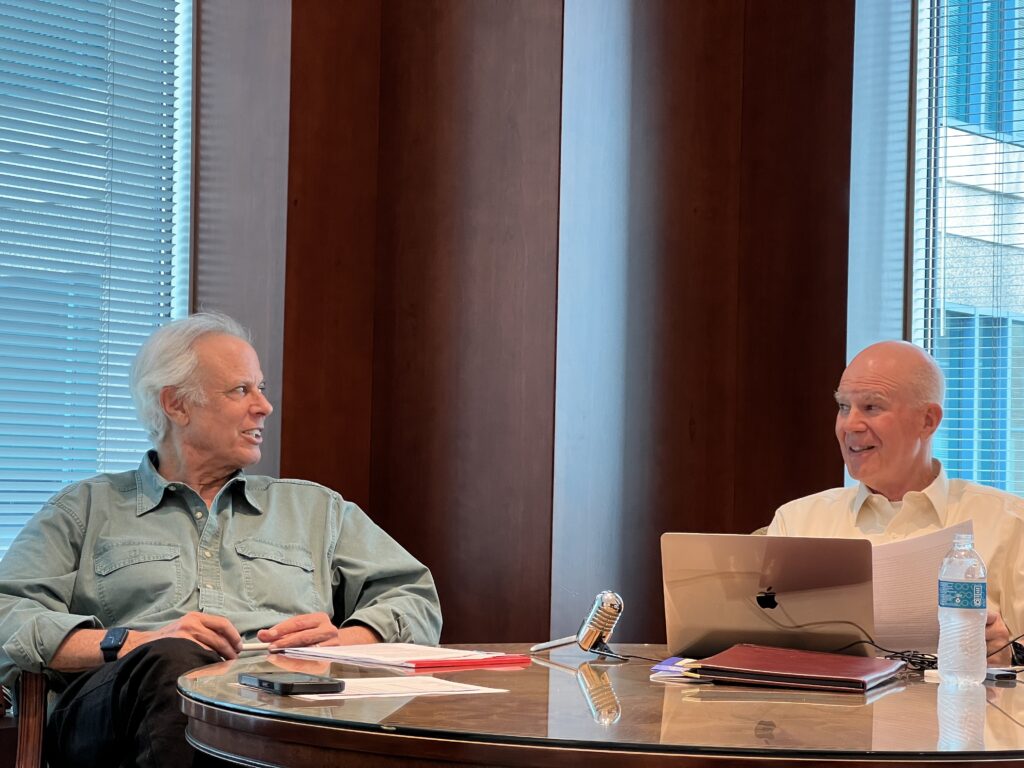

Bio
Gary D. Rappaport, is Chief Executive Officer of Rappaport, a retail real estate company he founded in 1984. Rappaport provides leasing, tenant representation, management and development services for more than 14.7 million square feet. Rappaport’s portfolio includes more than 76 shopping centers and ground floor retail in some 115 mixed-use properties, both residential and office, located primarily throughout the mid-Atlantic region. Mr. Rappaport is Principal Partner for approximately 5 million square feet of the shopping centers managed by Rappaport.
He has made tremendous contributions to the shopping center industry as former Chairman and Trustee of the International Council of Shopping Centers (ICSC) and through his service on ICSC’s Executive, Executive Compensation, Nominating, Government Relations, Long Range Planning and PAC committees. Additionally, his demonstration of a well-rounded competency of the industry earned him ICSC’s respected Certified Retail Real Estate Professional (CRRP) credential. Mr. Rappaport continues to lobby at the state and federal government levels on many issues important to the shopping center industry.
Mr. Rappaport is committed to sharing his knowledge and experience as an entrepreneur and has authored three editions of Investing in Retail Properties, which explains how to structure real estate partnerships for sharing capital appreciation and cash flow. The information contained in the book is the basis for classes he teaches for ICSC’s University of Shopping Centers and as an annual guest instructor at Syracuse, Johns Hopkins, Georgetown, American and George Mason Universities as well as the University of Michigan and Georgetown Law Schools. The third edition will be published by Forbes this September. To get the first two chapters of the third edition of Investing in Retail Properties free, visit www.garyrappaport.com.
Show Notes
- The initial shock of the pandemic and portfolio resilience [00:06:00]
- Gary discusses the challenges faced by the retail industry during the initial shock of the pandemic and how his portfolio withstood the challenge.
- Lessons learned from COVID-19 [00:13:30]
- Gary reflects on the importance of reputation, helping others, and putting people first, and how these values have shaped his career.
- Stability in grocery-anchored retail [00:16:25]
- Gary highlights the stability and resurgence of grocery-anchored retail, with a focus on the strength of anchor credit tenants in the Washington DC area.
- Interest rates and their impact [00:20:45]
- Discussion on how higher interest rates are affecting sales and growth in the real estate market.
- Impact of high interest rates in the past [00:21:50]
- Reflecting on the impact of high interest rates in 1981 and how it affected the homebuilding business.
- Effect of remote work on retail and suburbs [00:27:00]
- Exploring how remote work has shifted sales from downtown to the suburbs, benefiting food and retail businesses in suburban areas.
- The explosion of the industrial sector due to the internet [00:34:00]
- The growth of the industrial sector due to online distribution from companies like Amazon and Walmart.
- Negotiating lease terms with a grocery store [00:35:00]
- The challenges and compromises in negotiating lease terms with a grocery store, including the percentage of the store that needs to be operational.
- The impact of the pandemic on retailers’ adaptability [00:36:00]
- How retailers adapted during the pandemic, including the use of ghost kitchens and delivery services to maintain sales.
- Acquisitions vs Development [00:47:30]
- Discussion on the strategy of acquiring and retrofitting properties versus developing from the ground up.
- Factors to Consider in Real Estate Deals [00:48:00]
- Exploration of the three key factors in putting a real estate deal together: expertise, obtaining a bank loan, and raising equity.
- Risk and Return in Retail Real Estate [00:51:00]
- Analysis of the risk and return in the retail sector compared to other sectors, such as residential apartments, and the complexities involved in retail real estate.
- The mall sector and its challenges [00:57:30]
- Discussion on the changing dynamics and challenges of operating in the mall sector compared to non-mall settings.
- Importance of mixed-use projects [01:04:00]
- Exploration of the benefits and desirability of mixed-use projects that combine residential, commercial, and retail spaces. Village of Leesburg example
- Reconsidering original plans and dealing with setbacks [01:07:50]
- Insights into properties that had to be reengineered or reconsidered due to changing market conditions, including examples of failed mall projects and repurposing of land for other purposes. Bowie, MD example
- The H Street Project [01:10:50]
- Gary discusses his involvement in the development of a strip shopping center on Eighth Street in Washington DC, which was a major retail corridor that had been affected by riots in the 1960s.
- Challenges and Successes of H Street Project [01:13:00]
- Gary talks about the difficulties and risks involved in developing the shopping center, including the tough neighborhood and the tragic incident of a guard being killed. Despite these challenges, the center became successful.
- Avec on H Street Project
- Skyland Development [01:16:40]
- Gary shares his experience of being asked by the city to develop retail on a large parcel of land called Skyland in Ward 7 and 8. He discusses the process of gaining control of the parcels and how the project evolved into a mixed-use development.
- Skyland Town Center
- The Capitalization with Friends and Family [01:23:00]
- Gary discusses his strategy of buying out institutional deals and stabilizing properties with friends and family for long-term ownership.
- Considering the Option of Raising a Fund [01:25:00]
- Gary contemplates whether to continue buying properties on a one-off basis or raise a substantial amount of money through a fund.
- Challenges of Selling Projects and Exploring a Fund Solution [01:28:00]
- Gary discusses the difficulties of selling projects quickly and the potential solution of raising a fund to address the issue.
- The lesson from a failed purchase [01:35:45]
- Gary talks about a property that he couldn’t purchase despite spending a lot of time and effort on underwriting and raising equity.
- The challenge of raising equity [01:36:45]
- Gary discusses the difficulty of raising equity in the current market where investors can get higher returns elsewhere.
- Considering a fund model [01:40:30]
- Gary contemplates the idea of raising a fund and discusses the pros and cons of different fund structures.
- The Importance of Finding Good Properties [01:44:26]
- Gary discusses the difficulty of finding good properties and the value of learning from other people’s models.
- The Emotional Connection to Properties [01:45:01]
- Gary talks about the emotional attachment he has to certain properties and the love he feels for them.
- Balancing Property Management and Ownership Philosophy [01:49:30]
- Gary explains the challenge of managing and leasing properties for others with different philosophies of reinvestment and the importance of maintaining a good brand image.
- The selection process for a publisher [01:57:15]
- Gary discusses how he chose Forbes as his book publisher and the costs associated with publishing a business book.
- The role of a publisher in marketing and understanding Amazon [01:59:50]
- Gary explains why he needed a publisher, particularly for marketing and understanding Amazon’s platform.
- Giving back and helping others [02:00:00]
- Gary shares his motivation for giving 100% of the book’s proceeds to the ICSC Educational Foundation and their desire to help others reach their dreams.
- Ownership in Real Estate and Building the Brand [02:09:28]
- Gary discusses the importance of offering ownership in real estate to top employees and building a strong brand for the company.
- Long-Term Note and the Value of the Management Company [02:12:00]
- Gary explains the strategy of using a long-term note with low interest rates to pay for the management company and discusses the value of the company compared to the real estate.
- Family Dynamics and Ensuring Continuity [02:13:00]
- Gary talks about the importance of maintaining family harmony and ensuring continuity in the business after he is no longer around, including aligning the children equally and building personal relationships with investors.
- The opportunity to take advantage [02:24:20]
- Discussion on the changing habits of people and the opportunity to improve and manage multiple properties effectively.
- Branding and tenant mix [02:25:15]
- Importance of branding and continuously working on improving the tenant mix to keep the centers attractive and evolving.
- Being responsive and distinguishing properties [02:26:30]
- The reputation of being responsive to tenant needs and creating a distinct look and feel for properties managed by Rappaport.
- Gary Rappaport’s Contact Information and a link to his new book
- Email: gdr@rappaportco.com
- Investing in Retail Properties (3rd Edition), by Gary Rappaport

